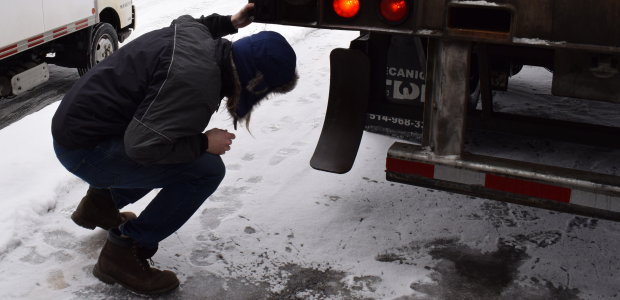
One Heck of a Bump
Depending on the environment, bump caps can be customized to suit most situations.
- By Benjamin Brook
- Mar 01, 2019
Head protection isn't the most talked about form of PPE. Most people equate it to simply wearing a hard hat, and for the most part, that's true. The bulk of head injuries sustained are construction related, whereas an object falls through the sky or swings from overhead, so why would anyone really see anything differently?
Then Hollywood stepped in. Suddenly a movie about concussions suffered in sports became relevant to everyday factors in the industrial workplace, and head trauma became a hot topic. Many companies dug deep and started focusing on implementing ways to ensure that their employees would remain concussion free. After all, it wasn't very long ago that the prescription to head injuries was relegated to just a "walk it off" solution.
My expertise lies in head injuries sustained by an individual from self-propulsion—basically, people who bump into things. As odd as it sounds, most injuries of this type are not due to someone's careless nature, but the nature of the environment, as well as having the wrong type of PPE.
Hard hats are great for construction sites where the dangers are largely overhead, but they are not so efficient for confined spaces and are designed to prevent impact from a moving object. Bump caps are designed to have a lower profile and offer cushioning directly against the front of head, where most users will strike against an inanimate object, such as a door frame, inside a pipe, under a sink, or an airplane wing. The impact of a body in motion against a very solid immovable object never ends well.
Much like for a football player, the impact from hitting your head against something that is not moving can result in a concussion, a traumatic brain injury that affects your brain function. While the effects are usually temporary, they will often sideline the individual, affecting the bottom line of the company. The resulting headaches, problems with concentration, loss of memory, and difficulty with balance and coordination will force the removal of the employee from work. One easily solvable problem can massively affect daily production by either removing a key player or, worse, having the person work while disoriented, most likely leading to more accidents.
The most achievable solution is the introduction of a bump cap. Depending on the environment, bump caps can be customized to suit most situations with reduced brim sizes for increased peripheral vision, styling designed to accommodate hearing protection, and textiles better suited for extreme weather environments. Depending on the budget, many bump caps that are currently available on the market are about as comfortable to wear as a baseball cap.
Choosing the Right Bump Cap
The important factors when choosing the right bump cap are:
- The temperature of the environment: Choose the right style and fabrics.
- Proximity to work area: Reduced visor size for greater peripheral vison.
- Possible liquid or contaminants from overhead: The right fabrics and visor.
- Corporate colors and uniform design.
- Sizing of the shell: One size fits most.
- Additional tools, such as intergraded LED in the brim to negate the need for head lamps.
- Required PPE that may be affected by the cap.
- The OSHA requirements for the work site.
- Proper EN812 certification (the only recognized certification as of the writing of this article).
The simple addition of a bump cap is the equivalent of a buying an insurance policy. It's always there when you need it, and it's even protecting you when you don't.
This article originally appeared in the March 2019 issue of Occupational Health & Safety.
About the Author
Benjamin Brook, the COO of Bon-Mar Textiles Inc., has worked in the field of head protection, specializing in bump caps, having launched the Surflex bump cap into the North American market more than 10 years ago. The line has evolved to include caps for extreme cold weather, caps for the airline industry, and knit bump caps for the outdoor and oil and gas industries. He also specializes in high-visibility PPE and heat stress apparel under the ActiCool Apparel line.